The fuel system is the lifeblood of your vehicle, delivering the precise amount of fuel needed for combustion at exactly the right moment. Without this complex network of components working together, your car wouldn’t move an inch. It’s essentially responsible for storing, filtering, and pumping fuel from the tank to the engine while maintaining optimal performance.
We’ll take you through the basics of how fuel systems work in modern vehicles and why understanding them matters for every car owner. Whether you drive a gasoline, diesel, or hybrid vehicle, knowing what happens between your gas tank and engine can help you identify potential issues before they become costly repairs. Stay with us as we break down this essential automotive system in simple, practical terms.
What Is a Fuel System and Why Is It Important
A fuel system comprises essential components that work together to deliver fuel from your vehicle’s tank to the engine. This complex network includes the fuel tank, pump, filter, fuel lines, injectors or carburetor, and pressure regulators—all coordinated to ensure proper engine operation.
Your vehicle’s fuel system performs five critical functions:
- Storing fuel safely in the tank
- Filtering out contaminants and impurities
- Pumping fuel at the correct pressure
- Measuring precise amounts of fuel for combustion
- Mixing fuel with air in the proper ratio for efficient burning
Vehicle performance depends heavily on a properly functioning fuel system. Engines require exact fuel-to-air ratios to operate efficiently—too much fuel causes wasted resources and emissions issues, while too little leads to poor performance and potential engine damage.
Modern fuel systems have evolved significantly from the simple carburetors of early automobiles. Today’s electronic fuel injection systems use sophisticated sensors and computer controls to optimize fuel delivery based on driving conditions, temperature, altitude, and engine load—resulting in better fuel economy and reduced emissions.
Different vehicles employ various fuel system designs depending on their engine type:
- Gasoline engines typically use port or direct injection systems
- Diesel engines use high-pressure common rail injection
- Hybrid vehicles incorporate specialized systems that manage both electric and combustion power sources
Regular maintenance of your fuel system prevents performance issues and extends vehicle lifespan. Ignoring fuel system problems often leads to decreased power, poor acceleration, rough idling, and eventually, complete engine failure in severe cases.
Key Components of a Fuel System
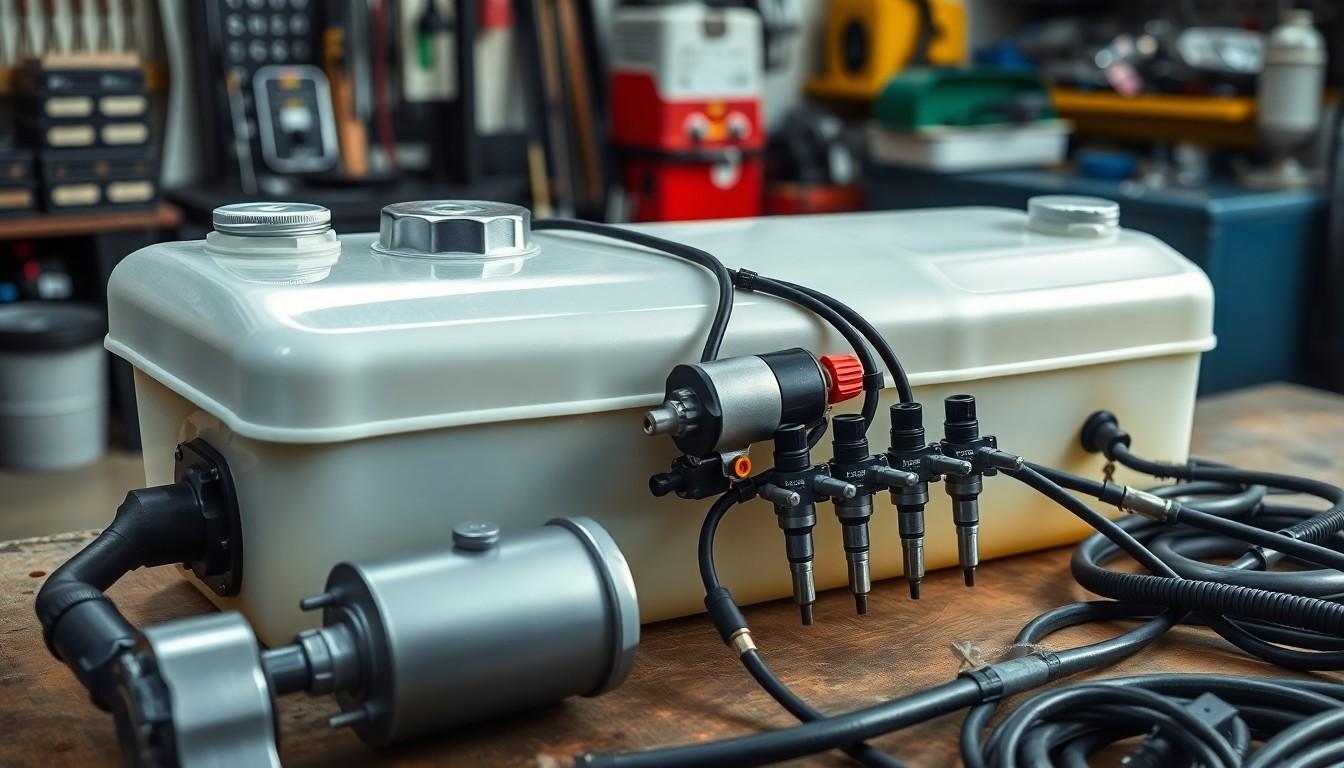
The fuel system in vehicles consists of several essential components that work together to deliver fuel efficiently to the engine. Each component plays a exact role in ensuring proper fuel storage, transportation, and delivery for optimal engine performance.
Fuel Tank
The fuel tank serves as the primary storage container for your vehicle’s fuel, whether it’s gasoline or diesel. It’s specifically designed with durable materials to securely hold fuel and prevent dangerous leaks. Modern fuel tanks include safety features such as anti-spill mechanisms and ventilation systems that prevent pressure buildup during temperature changes. These tanks are typically located at the rear of the vehicle to minimize damage during collisions.
Fuel Pump
Fuel pumps transfer fuel from the tank to the engine at the correct pressure needed for proper combustion. Electric fuel pumps are commonly installed inside the fuel tank in most modern vehicles, providing consistent pressure regardless of engine speed. Mechanically driven pumps, attached directly to the engine, are more common in older vehicles and operate based on engine RPM. Fuel pumps maintain precise pressure levels—typically between 35-65 psi for gasoline engines—ensuring optimal fuel delivery under various driving conditions.
Fuel Lines and Filters
Fuel lines transport fuel throughout the system through specially designed tubes that resist corrosion and high pressure. These lines are constructed from materials like reinforced rubber or metal to withstand environmental factors such as heat, cold, and road debris. Fuel filters remove harmful contaminants including dirt, rust particles, and water from the fuel before it reaches sensitive engine components. Most vehicles have both primary and secondary fuel filters, with replacement intervals ranging from 15,000 to 30,000 miles depending on driving conditions and manufacturer recommendations.
Fuel Injectors or Carburetor
Fuel injectors deliver precisely metered amounts of fuel directly into the engine’s combustion chamber in modern fuel-injected systems. These electronically controlled components spray atomized fuel in exact patterns to optimize the air-fuel mixture, with each injector capable of opening and closing hundreds of times per second. Carburetors, found in older vehicles, mix fuel with air through mechanical means before delivering the mixture to the engine. While less efficient than fuel injection systems, carburetors remain common in vintage cars, small engines, and some specialized applications. The fuel rail connects multiple injectors in fuel-injected systems and maintains consistent fuel pressure across all cylinders.
How Different Fuel Systems Work
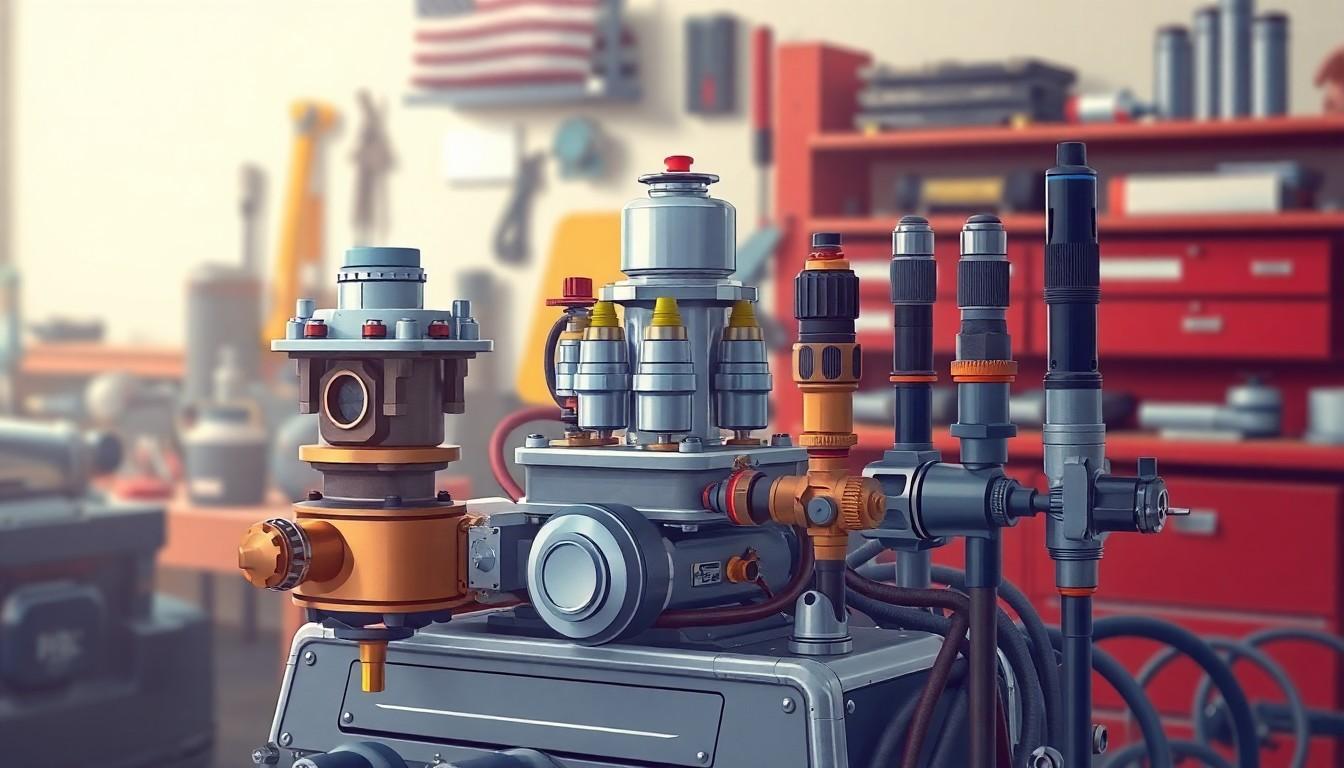
Modern vehicles use several distinct fuel delivery systems that have evolved dramatically over the decades. Each system offers unique advantages and operational characteristics that affect vehicle performance, efficiency, and emissions.
Carbureted Fuel Systems
Carbureted systems represent the earliest widespread fuel delivery technology in automobiles. These systems mix air and fuel before delivery to the engine’s intake manifold through a mechanical device called a carburetor. Air enters the carburetor and creates a vacuum that draws fuel into the airstream through a venturi, creating an air-fuel mixture that’s then pulled into the engine cylinders. Even though their historical importance, carburetors have largely disappeared from modern vehicles due to their relative inefficiency, maintenance requirements, and inability to meet strict emissions standards. Many classic car enthusiasts still maintain carbureted systems, appreciating their mechanical simplicity and distinctive engine response characteristics.
Fuel Injection Systems
Fuel injection represents a important advancement over carbureted systems, offering greater precision and efficiency in fuel delivery. These systems use electronically controlled injectors to spray fuel directly into the intake manifold or cylinders. Single-point (throttle-body) injection systems use one or two injectors mounted in the throttle body, serving as an intermediate technology that replaced carburetors in the 1980s. Multi-point (port) injection systems feature individual injectors for each cylinder positioned near the intake ports, providing more precise fuel distribution and better atomization. Sequential fuel injection takes this concept further by timing each injector’s spray to correspond with the engine’s firing order, maximizing efficiency and minimizing emissions. Fuel injection’s electronic control enables real-time adjustments based on engine load, temperature, and driving conditions, resulting in smoother operation and improved fuel economy.
Direct Injection Technology
Direct injection represents the most advanced fuel delivery system in modern vehicles, injecting fuel directly into the combustion chamber rather than the intake tract. High-pressure injectors (operating at 2,000+ PSI) spray precisely measured fuel amounts directly into each cylinder at the exact moment needed for optimal combustion. This technology creates a more complete burn, extracting more energy from each fuel droplet while reducing emissions. Gasoline Direct Injection (GDI) systems have become standard in many new vehicles, offering 15-20% better fuel efficiency compared to port injection systems. Direct injection allows for higher compression ratios, contributing to greater power output and torque while using less fuel. The precision of this system enables sophisticated combustion strategies like stratified charge and lean burn operations that weren’t possible with earlier fuel delivery methods.
Common Fuel System Problems and Symptoms
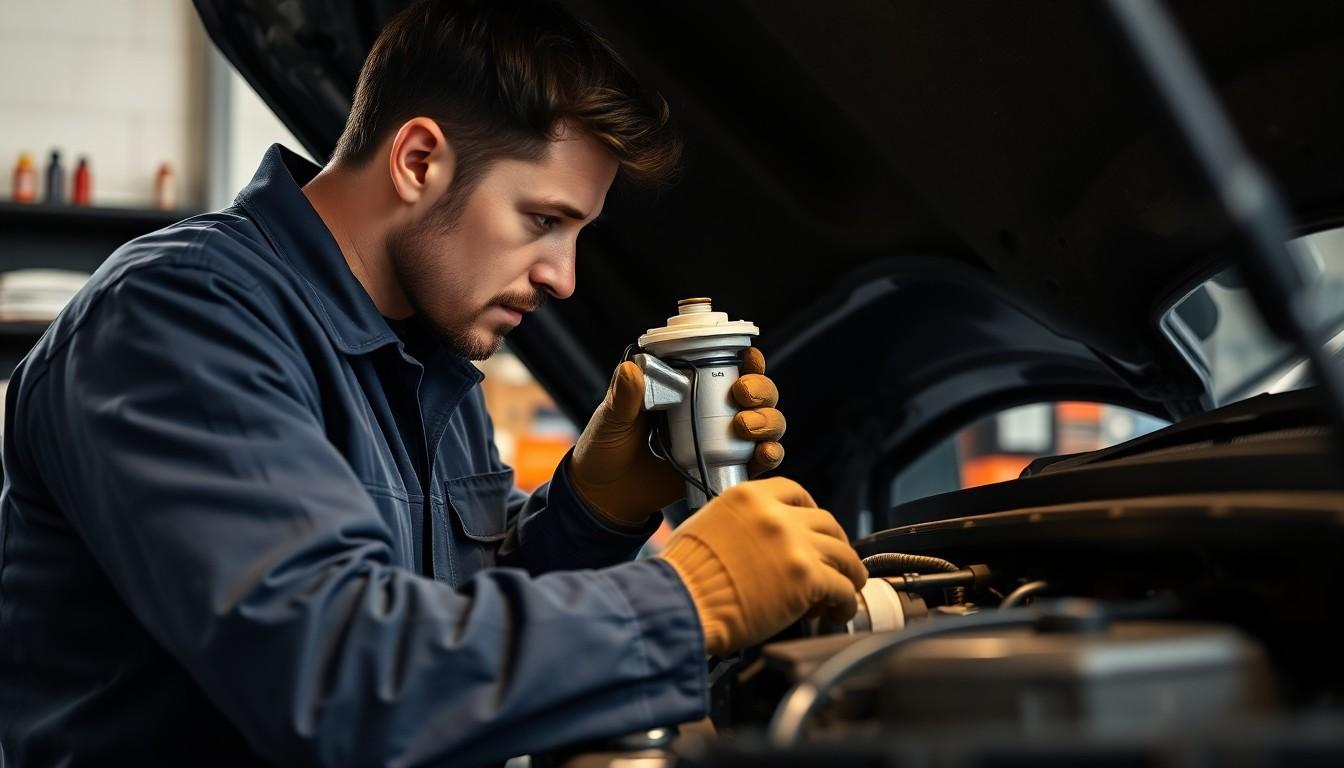
Fuel system issues can significantly impact your vehicle’s performance and reliability. Recognizing the warning signs early helps prevent more serious damage and costly repairs down the road.
Poor Engine Performance
Poor engine performance often stems from fuel system complications that restrict proper combustion. Clogged fuel filters reduce fuel flow to the engine when they’re not replaced during regular maintenance intervals. Faulty or dirty fuel injectors prevent the optimal amount of fuel from reaching the combustion chamber, resulting in hesitation, stuttering, or loss of power during acceleration. Low fuel pressure, typically caused by a malfunctioning fuel pump or deteriorating fuel pressure regulator, creates inconsistent fuel delivery that leads to rough idling, stalling, or decreased power output.
Strange Noises From the Fuel Pump
Unusual sounds coming from your fuel tank area indicate potential fuel pump problems that shouldn’t be ignored. A failing fuel pump produces distinctive whining, grinding, or humming noises as its internal components wear out over time. Running your vehicle with consistently low fuel levels forces the pump to work harder than designed, generating more noise and accelerating pump deterioration. These sounds typically become more noticeable during acceleration when the pump must deliver additional fuel to meet increased engine demands.
Difficulty Starting the Engine
Starting problems frequently point to fuel system deficiencies that prevent proper engine ignition. Clogged fuel filters restrict the flow needed for initial combustion, making the engine crank longer before starting. Faulty fuel pumps fail to deliver sufficient fuel pressure to the injectors, resulting in extended cranking or complete failure to start. Bad or clogged fuel injectors can’t properly atomize fuel into the combustion chamber, creating hard starting conditions particularly in cold weather. Insufficient fuel pressure throughout the system prevents the engine from receiving the precise fuel-air mixture required for combustion, leaving you stranded with a vehicle that refuses to start or runs poorly immediately after starting.
Maintaining Your Fuel System for Longevity
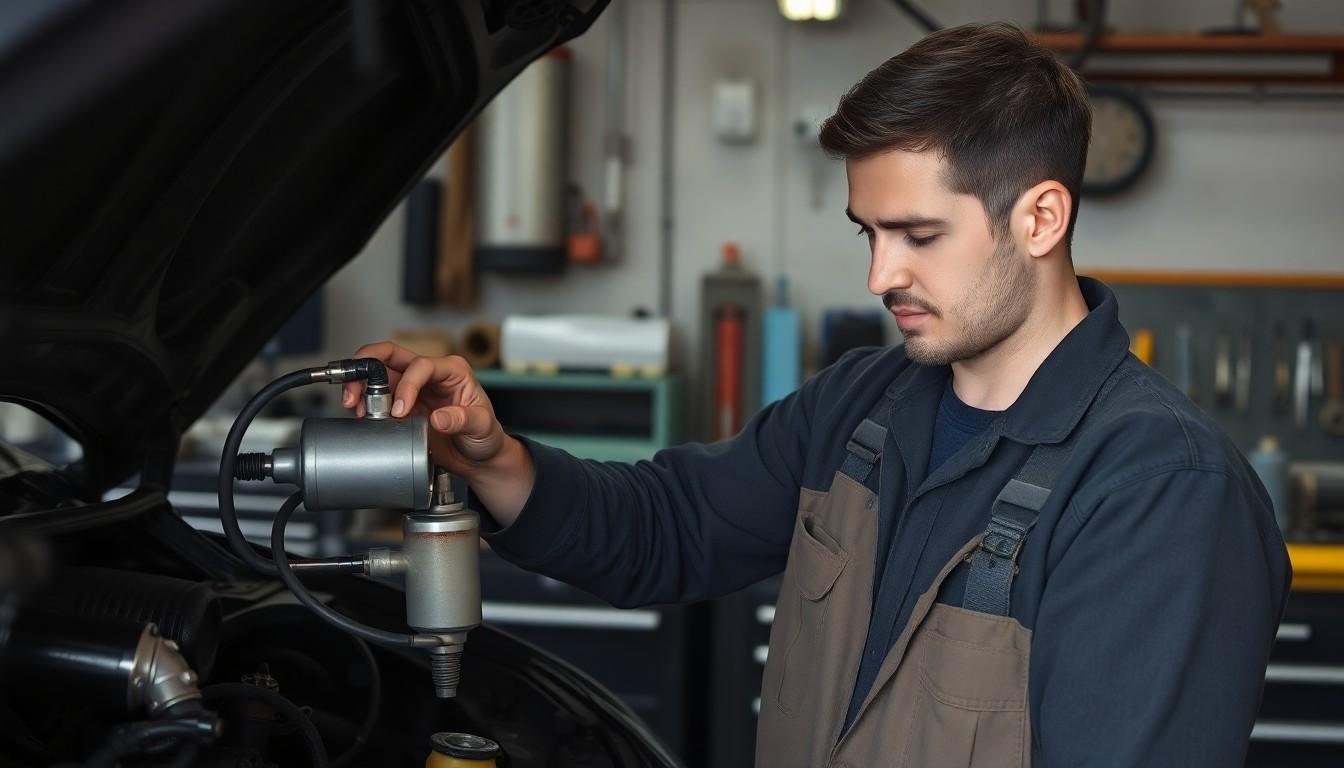
Proper maintenance of your vehicle’s fuel system ensures optimal performance and extends the life of your engine. Regular upkeep prevents costly repairs and keeps your vehicle running efficiently for years to come.
Regular Maintenance Tips
Replacing your fuel filter according to manufacturer recommendations is essential for preventing contaminants from reaching your engine. Most vehicle manufacturers suggest changing the filter every 30,000 miles, though this varies based on your exact model and driving conditions.
Periodic fuel system cleaning removes harmful deposits that accumulate in fuel injectors and lines over time. These deposits can restrict fuel flow and cause poor combustion, leading to decreased performance and efficiency.
Inspecting your fuel tank for rust or corrosion helps identify potential problems before they cause leaks or contamination. External damage to the tank can compromise its integrity and create safety hazards.
Checking fuel lines regularly for cracks, wear, or damage prevents dangerous fuel leaks and ensures consistent fuel delivery. Deteriorated fuel lines are especially common in older vehicles or those driven in harsh climates.
Monitoring fuel pressure maintains optimal engine performance by ensuring the correct amount of fuel reaches the combustion chamber. Low pressure often indicates a failing fuel pump, while high pressure might signal a faulty pressure regulator.
When to Seek Professional Help
Engine performance issues like poor fuel economy, rough idling, or hesitation during acceleration often indicate fuel system problems requiring expert diagnosis. These symptoms might stem from clogged injectors, failing pumps, or contaminated fuel.
Fuel leaks present immediate safety hazards and require prompt professional attention. Even small leaks can lead to fire risks and should never be ignored or temporarily patched.
Dashboard warning lights, particularly the check engine light, frequently signal fuel system malfunctions that need professional diagnostic equipment to identify correctly. Modern vehicles store exact error codes that mechanics can retrieve to pinpoint issues.
Unusual noises from your fuel pump, such as whining or buzzing sounds, typically indicate the pump is failing and needs replacement. A healthy fuel pump operates with minimal noise during normal driving conditions.
Following manufacturer-recommended service intervals for your exact vehicle model prevents many common fuel system issues before they develop. Professional maintenance typically includes comprehensive fuel system inspections that catch potential problems early.
Fuel System Advancements and Future Trends
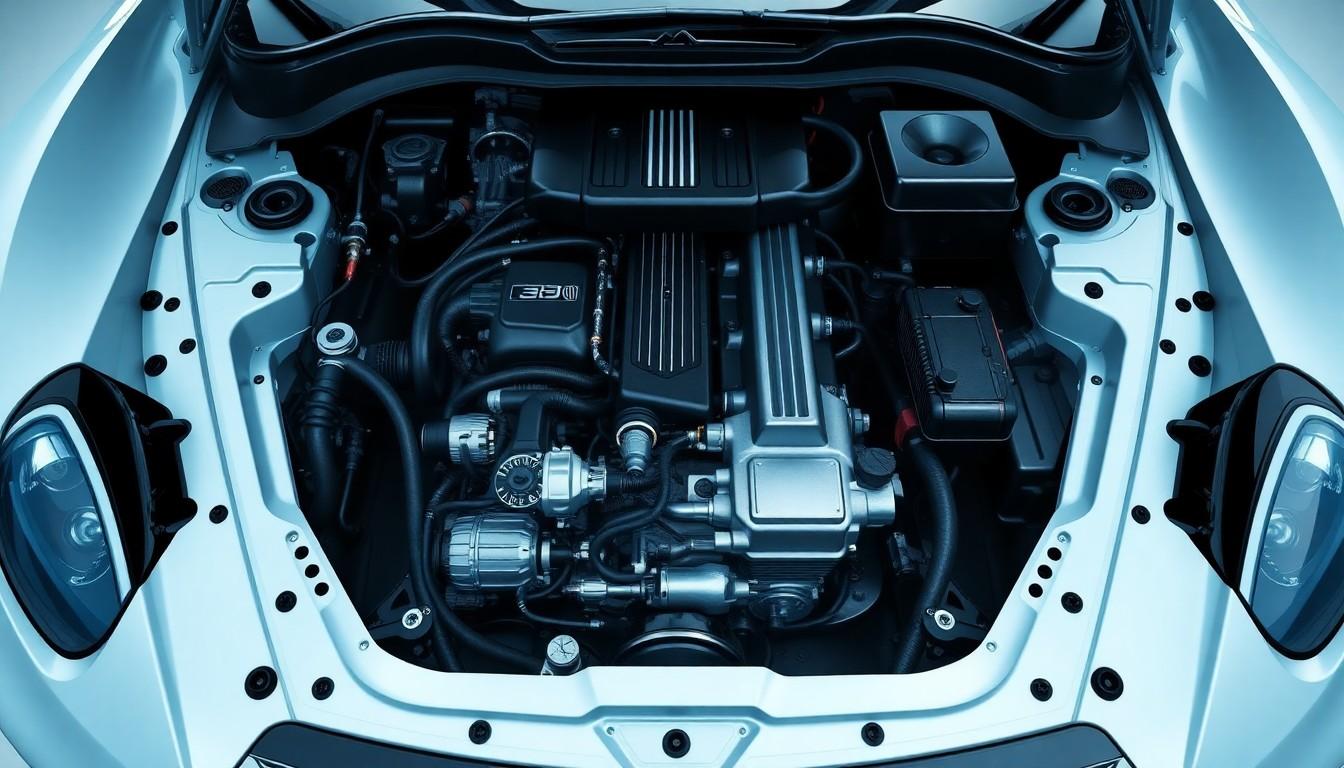
Electronic Fuel Injection (EFI)
Electronic fuel injection represents a important leap forward from traditional carburetors in modern vehicles. Computer-controlled fuel injectors deliver precisely measured amounts of fuel, creating optimal air-fuel mixtures for combustion. EFI systems have dramatically improved fuel efficiency by up to 20% compared to carbureted systems while simultaneously reducing harmful emissions. These advanced systems continuously adjust fuel delivery based on real-time engine conditions, ensuring peak performance across various driving situations.
Direct Fuel Injection
Direct fuel injection technology injects fuel straight into the combustion chamber rather than the intake manifold, revolutionizing engine efficiency. This precision delivery method enables more complete fuel combustion and allows engines to run leaner when appropriate. Modern GDI (Gasoline Direct Injection) systems create higher compression ratios, resulting in improved power output from smaller, more efficient engines. Direct injection’s ability to precisely time fuel delivery has made it a cornerstone technology in today’s high-efficiency engines.
Fuel Pressure Regulation
Advanced fuel pressure regulators maintain optimal pressure throughout the entire fuel system, ensuring consistent engine performance. Electronic pressure regulators communicate with the ECU to make real-time adjustments based on driving conditions and engine load. Modern systems can maintain pressure within 1-2 PSI of the target value, preventing performance issues caused by pressure fluctuations. This precise control eliminates many drivability problems common in older vehicles with less sophisticated regulation systems.
Sensors and Monitoring
Today’s fuel systems incorporate extensive sensor networks that continuously feed data to the engine control unit. Oxygen sensors analyze exhaust composition to verify combustion efficiency, while fuel pressure sensors ensure optimal delivery pressure. Temperature sensors monitor fuel conditions to adjust delivery parameters in different climate conditions. These integrated monitoring systems allow for split-second adjustments that maximize efficiency and minimize emissions across all driving situations.
Hybrid and Electric Vehicles
Hybrid vehicles use sophisticated dual-energy systems that integrate traditional fuel delivery with electric power. These systems intelligently switch between or combine power sources to maximize efficiency and performance. Many hybrid models incorporate regenerative braking to recapture energy that would otherwise be lost. Electric vehicles completely eliminate traditional fuel systems, replacing them with advanced battery management systems that distribute power to electric motors with over 90% efficiency—significantly higher than conventional combustion engines.
Alternative Fuels
Biofuels, hydrogen fuel cells, and compressed natural gas (CNG) represent growing alternatives to traditional petroleum fuels. Flex-fuel systems can adapt to various fuel compositions, including ethanol blends up to E85 (85% ethanol). Hydrogen fuel cell vehicles combine hydrogen with oxygen to produce electricity, emitting only water vapor. CNG systems store natural gas at high pressure (3,000-3,600 psi) and require specialized fuel delivery components resistant to the unique properties of gaseous fuels.
Advanced Materials and Designs
Lightweight composite materials are replacing traditional metal components in modern fuel systems, reducing vehicle weight and improving efficiency. Carbon fiber-reinforced polymers can reduce fuel tank weight by up to 30% while maintaining structural integrity. Piezoelectric fuel injectors provide faster response times and more precise spray patterns than conventional solenoid injectors. These material advancements contribute to overall vehicle efficiency while improving durability and reducing maintenance requirements.
Autonomous and Connected Vehicles
Autonomous vehicle technology depends on highly reliable fuel systems with advanced self-monitoring capabilities. Connected vehicles share real-time fuel system performance data to optimize fleet efficiency and predict maintenance needs. Artificial intelligence analyzes driving patterns to continuously refine fuel delivery parameters for maximum efficiency. These intelligent systems can detect potential issues before they affect performance, significantly extending component lifespan and reducing unexpected failures.
Conclusion
The fuel system serves as the lifeline of your vehicle delivering the right amount of fuel for optimal performance. From traditional carburetors to advanced direct injection systems we’ve seen remarkable improvements in efficiency power and emissions control.
Regular maintenance is crucial to prevent issues that can lead to poor performance or costly repairs. By understanding your vehicle’s fuel system components and recognizing warning signs early you’ll extend your engine’s life and maintain peak performance.
As automotive technology continues to evolve with electronic management systems alternative fuels and hybrid answers fuel systems will become even more sophisticated. Staying informed about these advancements will help you make better decisions about your vehicle’s care and maintenance for years to come.
Frequently Asked Questions
What is the fuel system in a vehicle?
The fuel system is a vital component that stores, filters, and delivers fuel from the tank to the engine for combustion. It includes the fuel tank, pump, filter, fuel lines, injectors or carburetor, and pressure regulators. This integrated system ensures your engine receives the right amount of fuel at the correct pressure, directly impacting your vehicle’s performance, efficiency, and reliability.
How does a modern fuel injection system work?
Modern fuel injection systems use electronically controlled injectors to deliver precise amounts of fuel into the engine. Unlike older carburetors, these systems can adjust fuel delivery based on various driving conditions using data from multiple sensors. This results in better fuel economy, lower emissions, and improved engine performance. Most new vehicles use either multi-point injection or direct injection technology.
What are signs of fuel system problems?
Key indicators include poor engine performance (hesitation, stalling, loss of power), decreased fuel efficiency, difficulty starting the engine, and unusual noises from the fuel pump area (whining or grinding sounds). You might also notice rough idling, engine misfires, or illuminated check engine lights. Addressing these symptoms early can prevent more severe damage and costly repairs.
How often should I maintain my vehicle’s fuel system?
Replace your fuel filter every 30,000 miles or according to your vehicle’s maintenance schedule. Consider a professional fuel system cleaning every 15,000-30,000 miles. Regularly inspect the fuel tank for rust or damage, check fuel lines for cracks, and maintain proper fuel pressure. Following manufacturer-recommended service intervals helps prevent common fuel system issues.
What’s the difference between carbureted and fuel injection systems?
Carbureted systems use mechanical devices (carburetors) to mix air and fuel before entering the engine. They’re simpler but less efficient and precise. Fuel injection systems electronically control fuel delivery directly into the intake manifold or combustion chamber, providing better fuel economy, reduced emissions, and improved performance. Most modern vehicles use fuel injection technology due to stricter emissions standards.
What advancements have been made in vehicle fuel systems?
Recent advancements include Electronic Fuel Injection (EFI), which improves efficiency by up to 20%; Direct Fuel Injection (DFI) for enhanced power and economy; sophisticated sensor networks for real-time adjustments; and improved fuel pressure regulators. Modern systems also incorporate lightweight materials, compatibility with alternative fuels, and integration with hybrid technologies for maximum efficiency and reduced environmental impact.
When should I seek professional help for fuel system issues?
Seek professional help if you notice persistent poor fuel economy, rough idling, stalling, dashboard warning lights, or fuel leaks. Also consult a mechanic if you hear unusual noises from the fuel pump area or experience difficulty starting your vehicle. These symptoms often require specialized diagnostic equipment to identify and repair properly. Always address fuel leaks immediately due to safety hazards.
How does the fuel system affect my vehicle’s performance?
The fuel system directly impacts engine power, acceleration, fuel efficiency, and emissions. A properly functioning system delivers the precise amount of fuel needed for optimal combustion under all driving conditions. Problems like clogged filters or failing pumps can reduce power, cause hesitation during acceleration, increase fuel consumption, and potentially lead to engine damage if left unaddressed.







